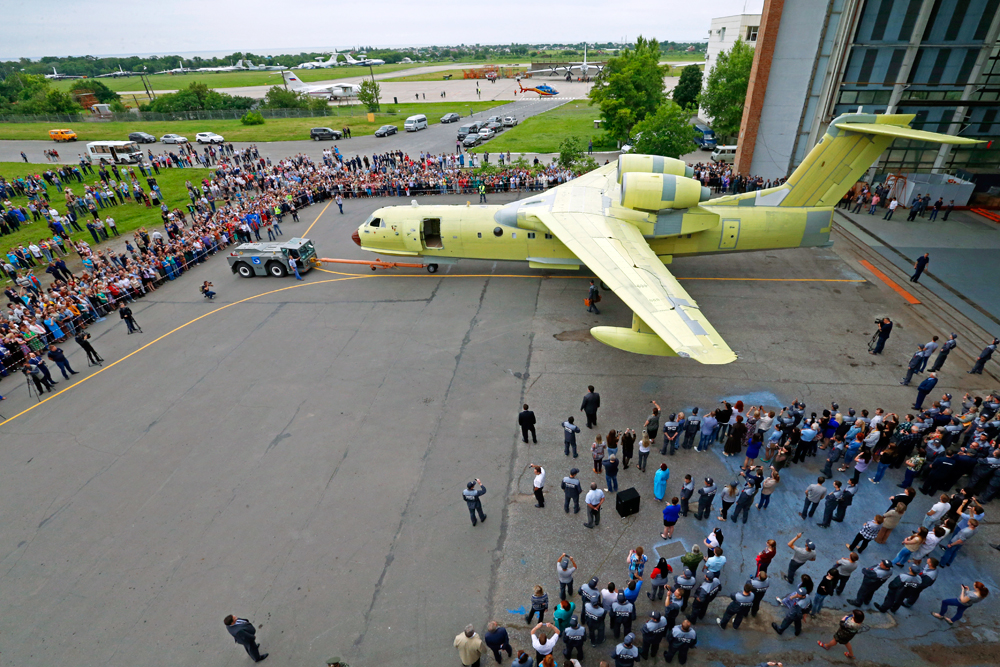
The unveiling ceremony for a Beriev Be-200ChS amphibious aircraft, modified for the Russian Emergency Situations Ministry at the Beriev Aircraft Company, May 30, 2016.
Valery Matytsin/TASSRussia has begun producing a new rescue plane for the Ministry of Emergency Situations. The BE-200ChS model has been modernized at the aviation plant in Taganrog (700 miles south of Moscow) to conform to today's needs and has become the first serial amphibian plane in Russia.
Initially there were many different construction models and objectives for the future aircraft. At one point there were discussions with the Rolls Royce company about producing engines for promoting the model in the Western market.
However, the Russian Defense and Emergency Situations Ministries decided to leave production for domestic entrepreneurs in order not to be hostage to political issues.
According to military observer at the Izvestiya newspaper Dmitry Safonov, this step helped the producer avoid the consequences of the sanctions against Russia, but limited deliveries of the plane to foreign markets.
"The decision to create the BE-200ChS completely out of domestic components prevents the plane from entering the Western market since the supply of spare parts will be too costly for the buyer. For now the aircraft is available on the Russian and Southeast Asian markets," said Safonov.
In his words, the aircraft's final payload is 8,000 kg, plus 12 cubic meters of water (12 tons) in tanks for putting out fires.
"The amphibian plane's main feature is that it collects water as it lands, fills the tanks and takes off right from the water body,” said Safonov, adding that for this reason Russia's clients will be countries with wide rivers and reservoirs, “since salty water would damage the trees while putting out the fires."
Crew – 2
Onboard capacity – up to 64
Length – 32.05 meters
Wingspan – 32.78 meters
Height – 8.9 meters
Mass – 28,000 kg
Payload – 8,000 kg of cargo plus 12 cubic meters of water in its tanks (it contains 8 sections of water tanks that can be either simultaneously or successively unloaded);
Maximum take-off mass:
from water – 40,000 kg
from ground – 42,000 kg
All rights reserved by Rossiyskaya Gazeta.
Subscribe
to our newsletter!
Get the week's best stories straight to your inbox